When determining if an infant has Hypertrophic Pyloric Stenosis (HPS), sonographers can mistake the GE Junction for the pylorus. I can admit that I have done it a time or two in my early years as a sonographer. I would not have distinguished the difference and similarity of the two without the help of a pediatric radiologist at the time. The image below shows you the locations of the two. Even though they are in distinct location along the alimentary canal, distance away from each other, they have a similar appearance and can be seen with particles passing through them when imaged with ultrasound.
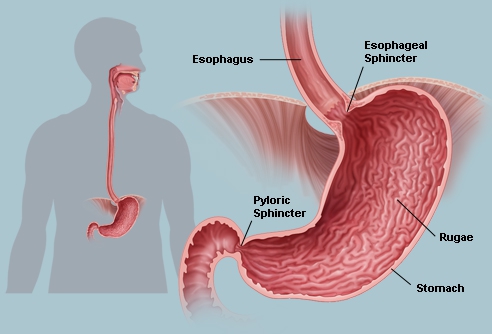
www.newhealthguide.org
The GE junction can be seen more superior and adjacent to the left lobe of the liver as oppose to the pylorus which can be seen closer to the stomach and duodenum, more inferiorly. I have provided comparison ultrasound images below.
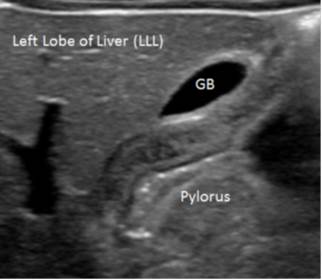
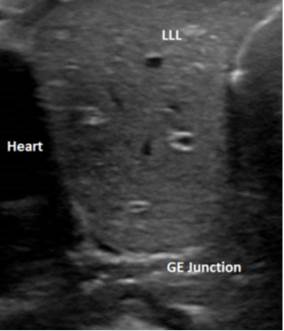
HPS is the when the muscle layer of the pylorus thickens and elongates preventing contents from the stomach from passing down into the duodenum. Infants will present with the following:
- be male
- weight loss and dehydration
- Projectile vomiting (non-bilious)
- Palpation of a hypertrophied pylorus, “olive”
As described in the reference article listed below, an abnormal or thickened pylorus tend lie adjacent to the gallbladder. In fully evaluating the pylorus I prove that there is stomach content passing through the pylorus by capturing a cine clip and I take a measurement of the muscle thickness and canal length as seen in the drawn image and ultrasound image below.
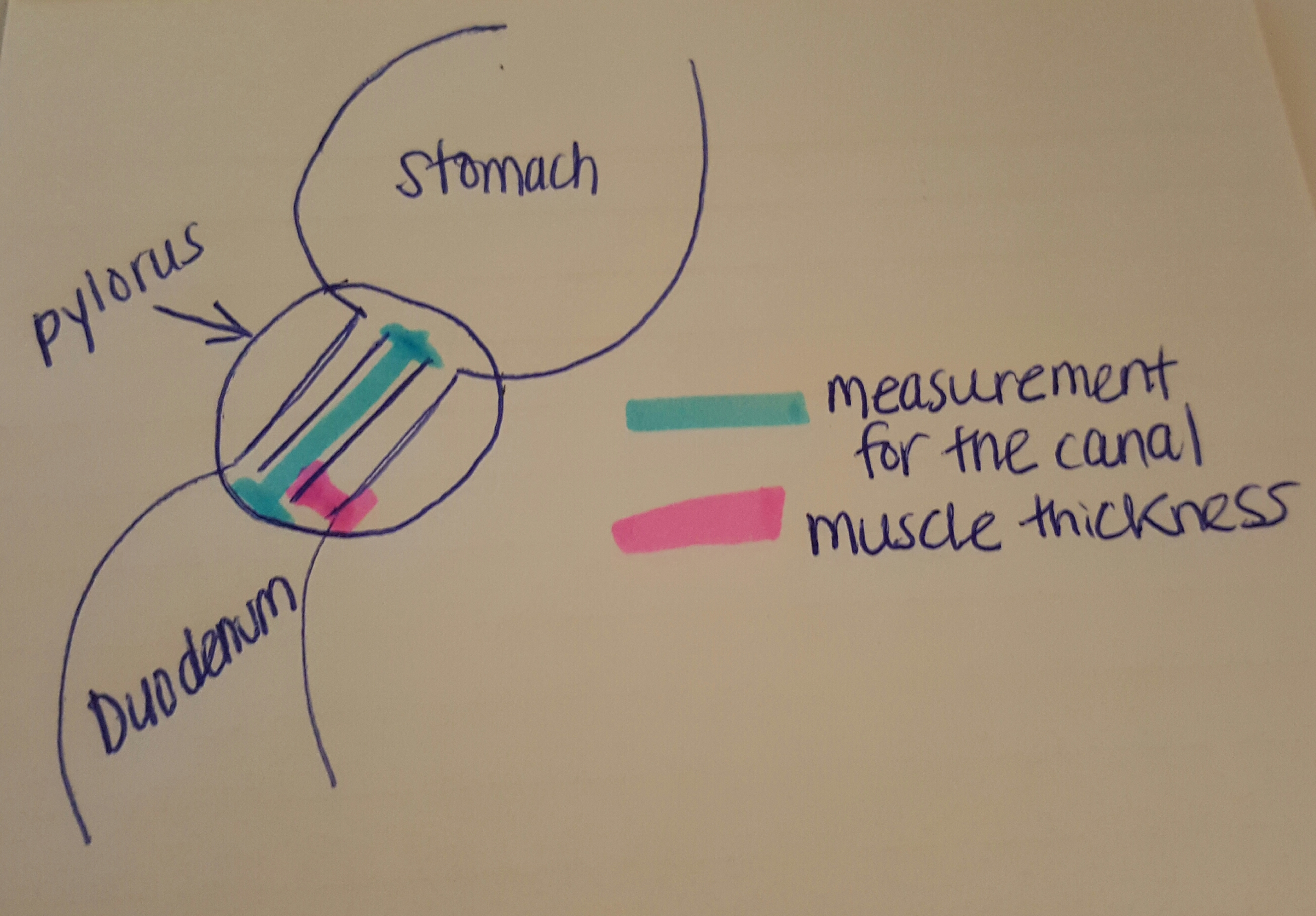
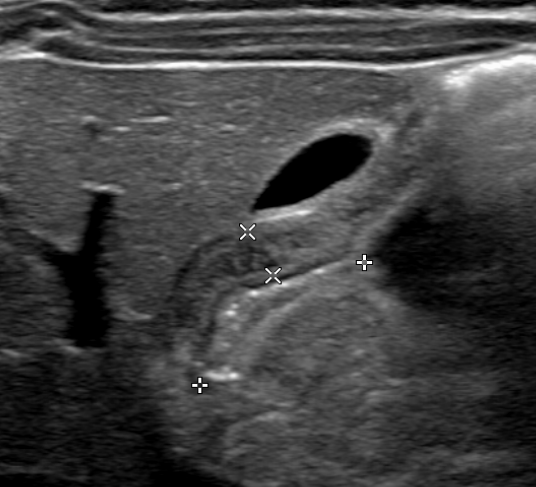
HPS is the when the muscle layer of the pylorus thickens and elongates preventing contents from the stomach from passing down into the duodenum. Infants will present with the following:
- be male
- weight loss and dehydration
- Projectile vomiting (non-bilious)
- Palpation of a hypertrophied pylorus, “olive”
As described in the reference article listed below, an abnormal or thickened pylorus tend lie adjacent to the gallbladder. In fully evaluating the pylorus I prove that there is stomach content passing through the pylorus by capturing a cine clip and I take a measurement of the muscle thickness and canal length as seen in the drawn image and ultrasound image below.
Further images may be required depending on the facility for which you are working in. More on pyloric stenosis can be found on page 34 of the SONONOTES Pediatric Sonography Study Guide. Visit www.sononotes.com to purchase.
Reference: Levine, Deborah, David C. Wilkes, and Roy A. Filly. “Pylorus subjacent to the gallbladder: An additional finding in hypertrophic pyloric stenosis.” Journal of Clinical Ultrasound 23.7 (1995): 425-28. Web
Yonella
“Think beyond the waves”